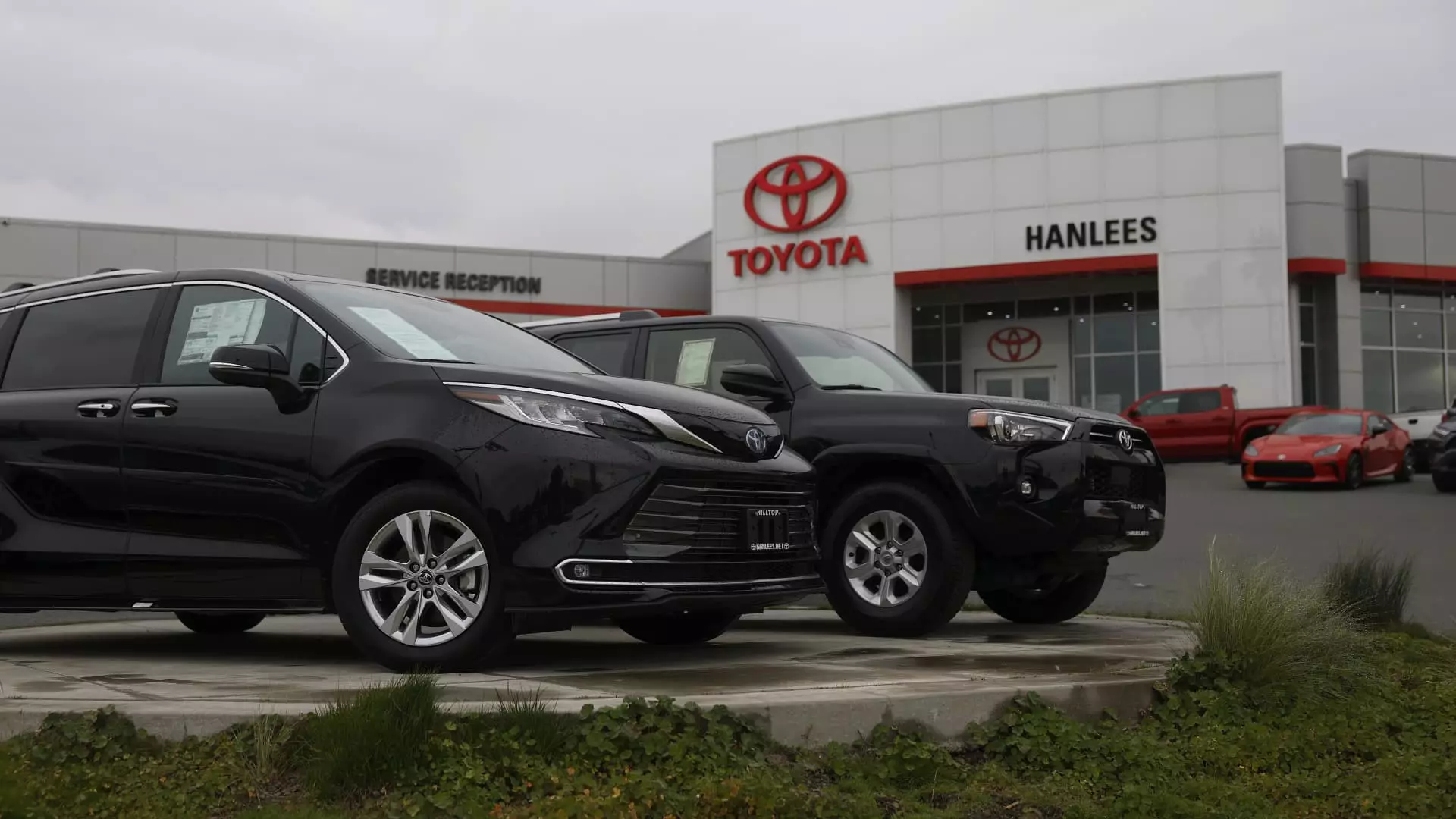The recent decision by the U.S. government to impose a staggering 25% tariff on imported vehicles, primarily targeting Asian manufacturers, has sent tremors throughout the global automotive market. The announcement, made by former President Donald Trump, was met with immediate and severe repercussions for companies like Toyota and Nissan, whose shares plummeted by nearly 10% within days. This drastic move is not merely a footnote in trade politics; it represents a major strategy shift that threatens the operational stability and competitive edge of these automotive giants.
As these tariffs loom, automakers who once thrived in what was considered the world’s most lucrative market face spiraling costs and diminishing revenues. The U.S. has long been the crown jewel in the automotive landscape, with Asian manufacturers dominating the market through innovation and efficiency. However, the new policies have raised questions about whether these companies can absorb the financial shock without passing costs onto consumers or significantly cutting into their profit margins.
Uncertainty in the Market
With Asian automakers accounting for six out of the top eight companies in U.S. sales, the looming tariffs have created an environment rife with uncertainty. As research firm Frost & Sullivan’s Vivek Vaidya points out, Toyota stands to be the most adversely affected, given its strong sales figures within the American market. This dynamic underscores a critical truth: the U.S. isn’t just a market; it’s an indispensable cornerstone of these companies’ revenue streams. The grim reality is that even with adjustments, such as shifting production to U.S. soil, the nuances of automotive manufacturing complicate the feasibility of establishing new plants rapidly, and the costs are astronomical.
Meanwhile, additional insights from experts in the field draw attention to the complexities involved in looser supply chains. Richardson Kaye, who heads an asset management group, illustrates the conundrum faced by manufacturers. The complexities of their existing supply chains rooted in Mexico and Canada mean that detaching from these relationships quickly isn’t merely impractical—it’s impossible. Tariffs aren’t just a hit to the wallet; they signify a harsh reality check for companies reliant on an integrated North American market.
A Case of David versus Goliath
Conversely, there are narratives of resilience amid adversity. Japanese automaker Suzuki, which notably does not sell vehicles in the U.S., stands out as an intriguing contrast to its beleaguered compatriots. According to Kaye, Suzuki has seen favorable stock performance during a time when its peers are grappling with significant losses. This phenomenon raises questions about adaptability and how certain businesses can navigate turbulent markets more adeptly than others. While Toyota, Nissan, and Hyundai buckle under the weight of impending tariffs, Suzuki’s sharp focus on selective markets showcases an alternative strategy that prioritizes resilience over volume.
Ultimately, the fallout from these tariffs is a precursor to a seismic shift in how Asian manufacturers may approach the U.S. market going forward. It poses an imperative to reassess business strategies, diversify markets, and innovate without the safety net of protectionist policies that have governed trade for decades. As the old adage goes, when the going gets tough, the tough get going. The question remains: Can the incumbents adapt quickly enough, or will the industry’s giants tumble under the weight of their own bureaucracies?
The fiscal environment is further complicated by the potential for consumer backlash against rising prices. If automakers decide to pass the increased costs onto consumers, the risk of losing market share becomes acute. In a landscape where consumers are increasingly seeking affordability alongside quality, the delicate balance of price and demand could tilt unfavorably.
The looming tariffs on Asian imports serve as a pivotal moment in the auto industry, illustrating larger battles in economic policy and global trade. For consumers, industry leaders, and workers alike, the next move in this high-stakes chess match remains a question shrouded in uncertainty. Amid the turmoil, the chosen strategies may well define the future of the automotive landscape for years to come.


Leave a Reply